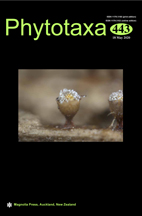Abstract
Lecanicillium isolates were obtained from deteriorated limestone and plaster inside historic buildings in Russia. Phylogenetic analysis of ITS and TEF1a sequence data coupled with morphological observations showed that three of the Lecanicillium isolates represent a new species, which we herein describe as Lecanicillium gracile. Lecanicillium gracile is morphologically similar to the closely related species, such as L. coprophilum, L. restrictum and L. testudineum, but differs by producing phialides secondarily on the initial phialides. Two another Lecanicillium isolates grouped with L. testudineum and L. coprophilum and hence we leave those isolates unidentified. In addition, we have isolated Parengyodontium album from deteriorated indoor mineral surfaces, which is phylogenetically close to Lecanicillium and produces zigzag-shaped tips of conidiogenous cells. Given high CFU counts of the isolated species in limestone and/or plaster samples and their physiological traits, we conclude that they are involved in deterioration of stone material inside historic buildings and deserve attention during restoration works.

